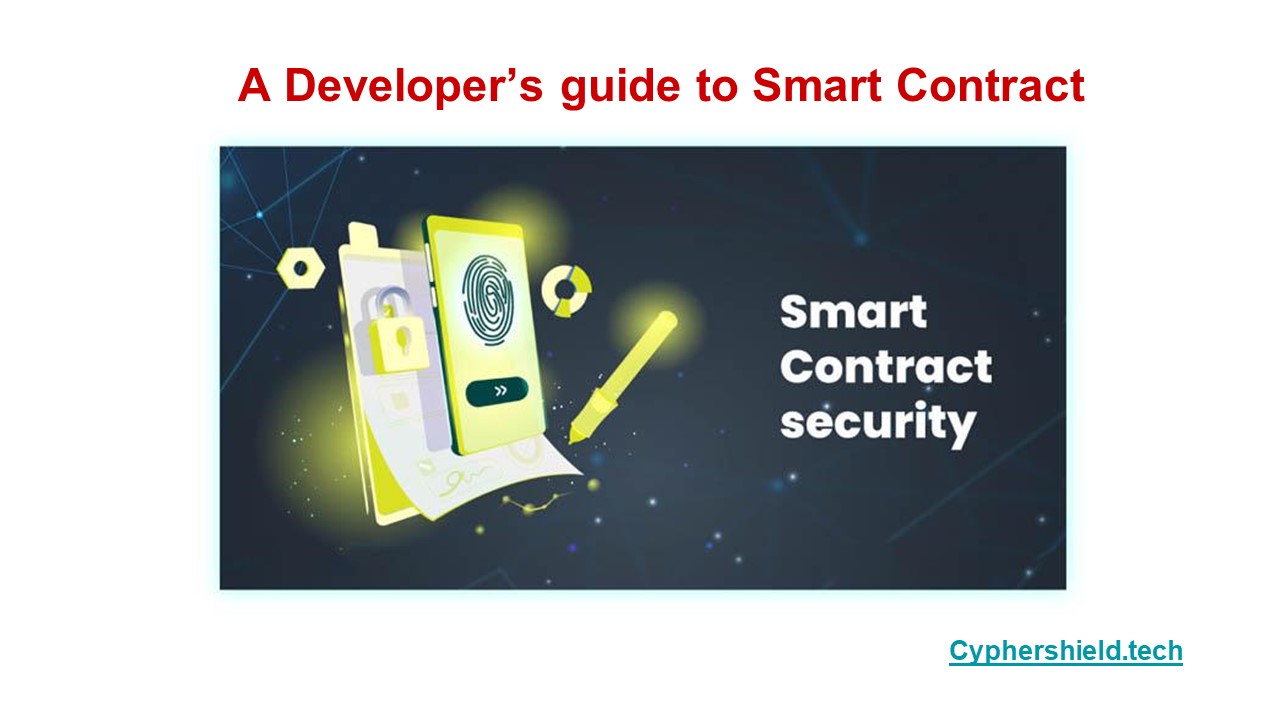Smart Contract Audit Services - PowerPoint PPT Presentation
Title:
Smart Contract Audit Services
Description:
Get your smart contracts audited and certified by leading smart contract security experts. Our smart contract audit services cover functionality, vulnerabilities, and gas efficiency. Talk to a consultant now to get started. – PowerPoint PPT presentation
Number of Views:3
Title: Smart Contract Audit Services
1
A Developers guide to Smart Contract Security
Audits
Cyphershield.tech
2
- Smart contract audits enable developers to
provide a thorough analysis of smart contract
sets. The main goal of a smart contract audit is
to detect and eliminate vulnerabilities. - A good smart contract audit examines and comments
on a projects smart contract code, presented to
the projects developers. - One key aspect to remember when writing smart
contracts is to keep it simple, as added
complexity increases the likelihood of errors - Simplicity in smart contract design is effective
in instances where the smart contract system
performs a limited set of functions for a
predefined period of time. - The security audit of a contract has to start
from the development stage, adding new, thorough
tests when new attack vectors are discovered - There are pitfalls that have to be considered
when programming smart contracts on the Ethereum
blockchain, such as how timestamps can be
imprecise, with miners influencing the execution
time of a transaction.
3
- Getting started
- First, well audit a smart contract for
bulk-uploading NFTs. A key component of auditing
smart contracts is the process of investigating
aspects of the code to find bugs,
vulnerabilities, and risks before deployment to
the Ethereum mainnet. - A smart contract audit is not a 100 percent
guarantee that the contract wont exhibit bugs or
vulnerabilities. - It does, however, guarantee that the smart
contract is secure and has been reviewed by an
expert. - Structure of a smart contract audit
- A smart contract audit report is expected to
contain a variety of items, listed below,
including details about identified
vulnerabilities, a disclaimer, and suggested
remediations.
4
- Disclaimer This section is important for stating
that the audit is not a legally binding document
and provides no guarantee - Overview of the audit A brief look at the
contract and the best practices that have been
observed in its creation - Attacks carried out on the contract Outlines the
attacks that have been carried out on the
contract, ensuring its security - Critical-level vulnerabilities Outline critical
vulnerabilities found in the contract, such as a
bug that allows attackers to steal currency - Medium-level vulnerabilities Vulnerabilities
that could damage the contract but with a
limitation - Low-level vulnerabilities Issues that dont
affect the contract - Inspecting the code line by line Analysis of the
lines of code with potential improvements
5
Disclaimer Smart contracts are deployed and
executed on the Ethereum blockchain. An audit
cannot explicitly guarantee that the smart
contract will forever be secure, since changes on
the Ethereum platform could create new attack
vectors that affect the smart contract. This
document is not meant to serve as a warranty
about the safety or utility of the code contained
in this smart contract and is designed for
discussion purposes. Overview The project
contains only one file, NftUpload.sol, composed
of 114 lines of code written in
Solidity. Relevant functions and state variables
are commented on based on the natspec
documentation.
6
- What is a sandwich attack?
- A sandwich attack is a front-running technique
and common attack vector on decentralized
exchanges running the automated market maker
mechanism. - The goal of this attack is to manipulate the
price of an asset as a result of buying and
selling. - Sandwich attacks are possible because all
blockchain transactions can be openly observed in
the mempool - Once the attack bot notices a pending transaction
of a victim exchanging asset X for asset Y, the
victim is front-run by buying asset Y. - Conclusion
- Smart contract audits are especially necessary
for DApps. A project having a smart contract
isnt an indication of value, but it is of great
importance. - I encourage developers to continue learning and
improving knowledge of latest updates when it
comes to contract security and best practices































